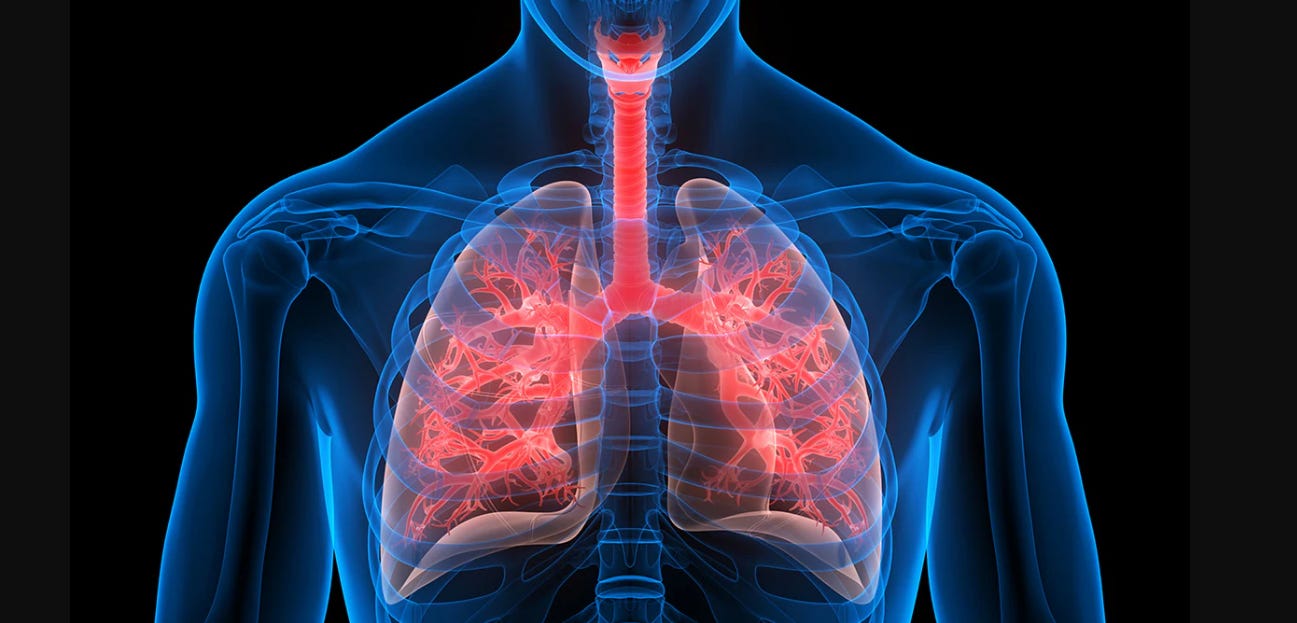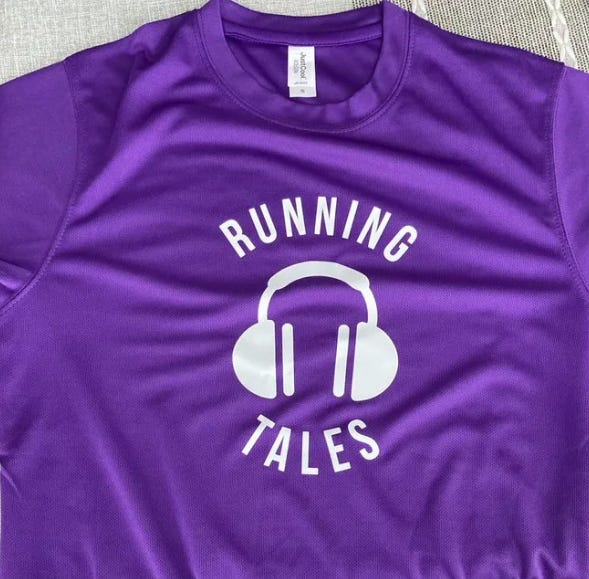“My dream is to stay alive, to live a life I'm proud of and where my children can look at me and be proud”
When Natalie Crawford was diagnosed with cystic fibrosis, it was presented as a life-sentence - she decided to change the narrative and in the process changed the world
“Everything was about death and dying, and sick and pity. That’s not how I want to live. Life is beautiful… I wanted to change the narrative of CF. I didn’t want to be a pity story.”
Running achievements are relative. For some, getting out of the door is a major success. For others, 400-mile ‘journey ultras’ have almost become normal.
In a world where less than one per cent of people will ever complete a marathon, the four that Natalie Crawford has completed is already exceptional.
But Natalie’s accomplishments come with a huge asterisk next to them.
That’s because the 42-year-old has cystic fibrosis (CF), a genetic condition that causes sticky mucus to build up in the lungs and comes with a host of symptoms including difficulty breathing, coughing fits, frequent respiratory infections and lung disease.
When Natalie was diagnosed at 28, she wasn’t supposed to go on to run marathons. She wasn’t even supposed to run.
Natalie was supposed to take her medication. To hide away from people. And, according to doctors, to die within a handful of years.
Instead, she became one of the first women with cystic fibrosis in the world to run a marathon.
In doing so, she changed the way the medical profession think about exercise and CF, but perhaps more importantly she has shifted the conversation around a condition where the default setting was pity and sadness to one where inspiration and hope can take centre stage.
‘Everything was death and dying and sick and pity - there were no positive stories’:

As a child, Natalie was sickly and frail. Suffering from a constant cough that wore her out, she would avoid exercise at all costs while school PE teachers would send her to the library, out of the way, rather than have to deal with her illness.
Misdiagnosed with asthma, her attendance at school suffered and she spent time in and out of hospital with chest infections. Days would be spent coughing up huge amounts of mucus and she suffered from frequent bouts of pneumonia.
For years, Natalie just thought that was the way her life was and that there was no particular rhyme or reason to her bouts of illness.
It was only at the age of 28 that she was diagnosed with CF. Worse, while the diagnosis was something of a relief for Natalie - who finally knew what was causing her to feel so sick - it came as a result of the news her unborn son also had the condition.
It was his diagnosis in the womb that had finally prompted doctors to test Natalie for the condition. The news came with an extra blow as CF sufferers have the capability to spread infections to each other, including bacteria that are harmless to people without the condition.
It meant Natalie and her son, Preston, were putting themselves in danger simply by having the most natural of relationships in the world: that of mother and child.
When Natalie started looking into cystic fibrosis, searching how she could combat the condition, she was struck by the negative answers she found.
She said: “I'm always looking for a challenge and I always like to prove a point and write a good story.
“When I looked for a story to explore CF, what it was, how people lived, everything was quite morbid. It was death and dying and sick and pity.
“There were no positive stories. There was nothing out there.”
Natalie railed against the idea that she should “just have to keep ticking over, doing your treatments, going to hospital, being in a hospital, coming home, going back into hospital, avoiding everybody because people are germy and a threat to you”.
She told Running Tales: “The advice was to stay in a bubble, stay away from everyone because it's dangerous out there.
“That's not how I want to live. And having a son with CF as well, I didn't want him to live like that. This life is beautiful. Whether you're sick or well, there's beauty out there and the world is such a big place.
“There's so much to explore and running is a great way to do that.
“I wanted to change the narrative of cystic fibrosis. I didn't want to be a pity story.”





Natalie said she had to navigate negativity in her daily life as well, including one occasion where she was “introduced as the sick daughter” at a family wedding.
“People said, ‘this is the one that's dying. She's not very well’. I didn't want my children hearing that because I've not brought them up to view their mum as someone that's sick or dying, because I'm not.
“We're living our best life and we're thriving. As a family, the three of us, there is no sadness. There's no sadness in our house.
“We wake up every day and I teach them to be thankful. Whether you're healthy or you're feeling a bit poorly, a bit under the weather, everything passes.”
Natalie quickly decided she wanted to change the way CF was talked about, and to give other people and parents searching for their story something positive to grab hold of.
It is an attitude that has become embedded in her running journey: “Having children growing up, they are at the age now where they have googled CF and we've had to have that discussion.
“I’ve never hidden anything from them, but I can say, ‘go and take a look at my medals that we've proudly got on every wall’. And they can see every day how hard I work, and I never stop working to be well.”
Two years ago, Natalie celebrated her fortieth birthday, a milestone only five per cent of the population with CF have reached.
“That was something we really did celebrate,” she said. “But my son, who is 13, will never have to doubt getting to 40. He knows that's possible. and it's not something that we need to fear.”
That situation is a long way from when Natalie and Preston were diagnosed, and she was told she wouldn’t see her children start school, let alone graduate.
“Now I have one that’s just started sixth form and one in secondary school,” she said.
“Anything is possible and you do just have to work extra hard, like we do with all of our dreams.
“My dream is to stay alive. My dream is to live a life that I'm proud of and where my children can look at me and be proud.”
What is cystic fibrosis:
An inherited condition, CF leads to mucus building up in the lungs and digestive system, causing potentially deadly infections and problems digesting food.
It results in breathing problems, while digestive issues mean people with CF don’t absorb the nutrients they need which can result in malnutrition.
Symptoms of CF include recurring chest infections, coughing and shortness of breath, difficulty putting on weight and growing, and bowel issues.
As recently as the 1980s, people with CF were not expected to live beyond their teens. Even though improved drugs have meant the average life expectancy has increased to around 50 in 2024, it was only 37 for females and 40 for men in 2010 - around the time Natalie was diagnosed.
Natalie said many of the infections those with CF develop are resistant to antibiotics, meaning a chest infection that might trouble someone without the condition for a couple of weeks can last 18 months.
“We're given frequent antibiotics,” she said, “but over time our bodies become resistant to them and they don't work.
“Breathing is something most of those without CF don't have to think about. Everyone wakes up, they take a breath and they get on with their day. With cystic fibrosis, on a good day, that's like you guys walking around with a cold or not feeling 100%.
“There's never a day where we feel well. I will say I feel well today. But today's a good day, and I've got sinusitis. My lungs are really clogged because I've not done any exercise this morning.
“And I've been up three hours in the night coughing. That's a good night.”
Natalie said she spends around 30 to 40 minutes coughing before she can fall asleep, and will then wake up regularly during the night.
The condition also sparks issues such as CF-related diabetes as a result of the pancreas getting blocked due to digestive issues. Natalie also has CF-related liver disease, which means she can’t sustain antibiotics or even take paracetamol.
People with CF also have problems with their joints and mobility. Natalie has hyper-mobility, which leads to pain and stiffness.
“That all comes into play,” she said. “Especially with exercise. A lot of the time, because we're coughing all the time, it affects posture.
“Quite often, if you see someone with cystic fibrosis, especially when they're running, they will be hunched over.
“Naturally my posture is very hunched because it hurts to hold a correct posture because thoracically I'm tight all the time, and it's easier to lean forward because it doesn't hurt.”
‘The chances are you won’t beat this’ - overcoming deadly bugs and conquering half-marathons:
Natalie started exercising shortly after Preston grew a bug called pseudomonas, which is known to linger for a long time. He had to take a large number of antibiotics and was in hospital on an IV drip.
She knew she had to do something to make life better for them in the long-term, so joined a gym and started walking on the treadmill.
At first, even walking for a kilometre would leave her gasping for air and having coughing fits. But she stuck at it, and things started to change when she met her coach, Aaron Wiles.
When the pair first started talking at the gym, he didn’t know Natalie had CF so she started to tell him about the condition and the challenges it presents.
At that time, she had just turned 30 and been told her life expectancy was around 36, something she was struggling to come to terms with.
Aaron suggested running and offered to try and help her beat the odds that doctors were throwing at her. At first the aim was to run a kilometre, but Natalie’s desire to embrace challenge soon had her thinking about tackling a half-marathon.
“We had a five year contract and decided to bring some humour into it,” she said. “He was just going to keep me alive until I got to the life expectancy age.
“Over time, he would come out and run with me and we'd do one lamppost to the next to the next. It wasn't even a 5K.
“And I cried. It hurt. I coughed up blood. I was very poorly. But we kept going back. With my running journey and CF it's always two steps forward, five back, start again on repeat.
“But that's okay. That just means that when you get to the the finish line you're aiming for, it's even sweeter. It's so much more meaningful because it's taken so much longer.”
Slowly, Natalie built her fitness up. Aaron met with her medical and physiotherapy teams, and they assessed the risks running might present her.
She said: “Aaron’s initial fear was he would be training me to run and I would drop down dead. He didn't know anything about CF and exercise, nobody really did.
“There were no reports of people with CF running half-marathons. As for marathons, that just didn’t happen. We were on new territory.”
Initially, doctors at the hospital were cautious. Natalie had been fighting infections and was having to use IV drips, and they were concerned running would cause more damage. But slowly she started to gain weight and her lung function began to increase.
Between them, Natalie and Aaron began to find answers around the extra calories and salt tablets she needed. Eventually, she found herself standing on the precipice of that first running dream - she had entered Silverstone half-marathon.
Then came was one of those ‘two steps forward, five back’ moments which Natalie associates with running and CF. She grew a bug called mycobacterium abscessus, one which is usually not harmful to the general population but can be deadly for those with respiratory problems.
Natalie said: “It's a scary, scary bug and the doctors said to me, ‘the chances are you won't beat this’.
“It's a course of 18 months treatment, which is like chemo. I lost a lot of my hair. People weren't aware because I put hair extensions in. Nobody knew on the outside, I guess I walked around like everything was fine, but it wasn't.
“I was being violently sick from the drugs. I was on IV's. I covered them over and still went into the gym. I had a long hospital stay, which was really tough.
“My lung function was rapidly declining. My liver was just against everything. And they said it would probably be 18 months before I'd need a liver transplant.
“But because of the mycobacterium bug, if I ever needed a lung transplant, it would wipe me off the transplant list as it would become too risky that it would reinfect new lungs.”
It was the hope of getting back to good health and running the half-marathon which kept Natalie going.
She said: “I was saying, ‘this is what I've told the children I'm doing, I'm running this and I'm getting a medal’.
“But on the flip side, I was going back to the hospital and they were telling me, ‘you can't do this, you need to stay in this hospital’.
“I was having IVs six times a day and through the night. I was nebulising really strong drugs that made me lose my voice. For about two years, I had a really hoarse voice and it just ripped the back of my throat.
“The drugs were so harsh, but I never doubted that I wouldn't come out the other end. I knew that I would. I knew I had to.
“I didn't have a choice because I needed that medal.”
Eventually, after a long battle, she was given the all-clear: “Looking back is a reminder of how far I have come. Now, I'm doing really well and I forget how scary that was and who I was before that.”
It took Natalie another two years before she finally ran her first half-marathon in 2016. That apparently impossible achievement has now become normal with Natalie now having completed 31 half-marathons, along with close to 50 competitive 10km and 5km races.
She also recently completed her fiftieth parkrun, where she said she has discovered a community which allows her to enjoy running in a more relaxed way.


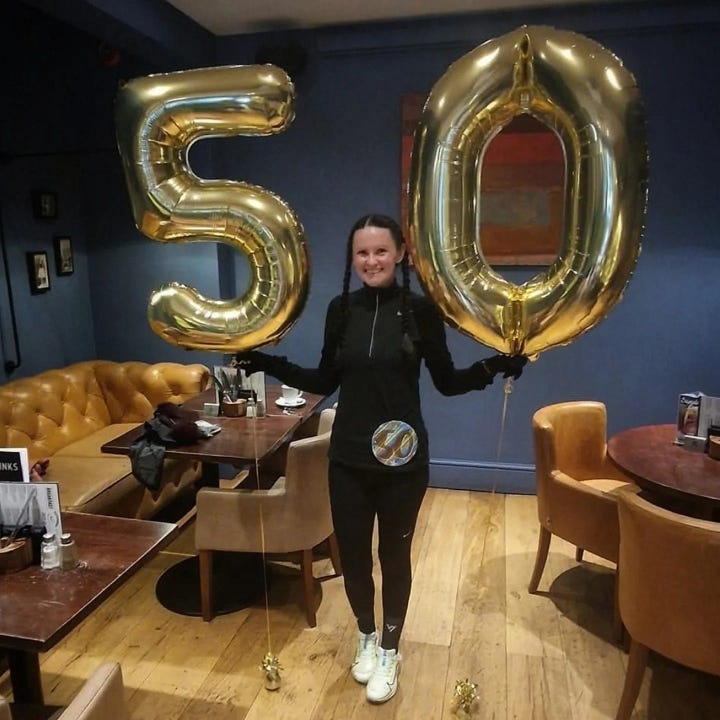
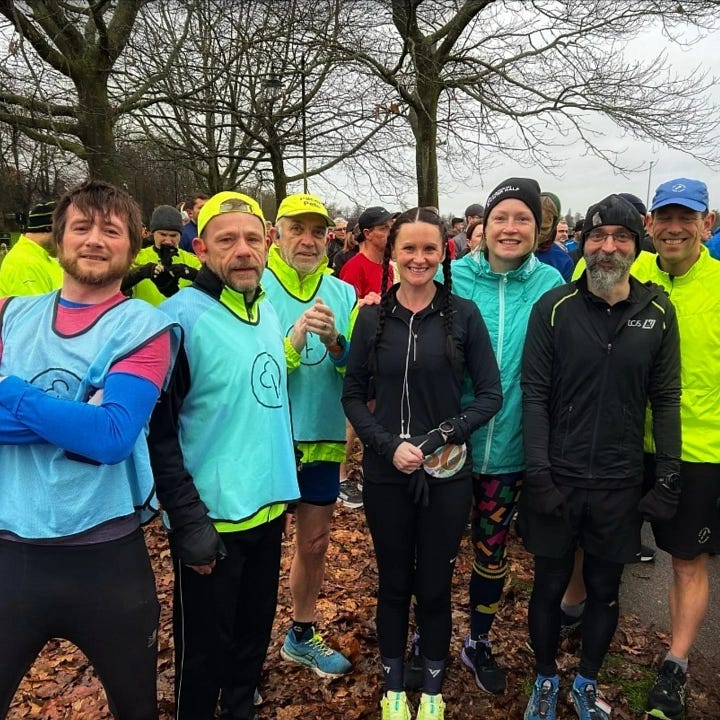
That first half-marathon is still the “most special race” Natalie has done. It came at a time when many in the medical community were casting doubt on her ability to run.
“I was told I would never do it,” she said. “I didn't have support from my CF team at the time. They said, ‘you're not well enough to do this, if you run this, you will die’.”
Natalie switched hospital teams to Nottingham where she found “amazing” support for her “crazy running ideas” - one of which was making the jump from half-marathons to marathons.
Back in 2017, when Natalie was planning that race, it was very rare for a woman with CF to run a marathon. More men, who have a better genetic prognosis than women when it comes to cystic fibrosis, had taken on the 26.2 mile distance but Natalie’s research uncovered less than a handful of women.
She said: “I knew of three other ladies worldwide, including my friend Emily, who lives in America, and Sabrina, who lives in Alaska.
“I'd spoken to them and they said, ‘yeah, go for it’. When I ran the Birmingham Marathon in 2017, I was one of very few women in the world to run a marathon with CF.
“So, it was a pretty big deal, although I don't really like to think about it like that. I'm just a runner. I'm just a mum. To me, it's nothing amazing.”
These days, thanks to the emergence of life-saving drugs, including Trikafta which thins the mucus in the lungs, more people - men and women - have been able to take on the marathon distance.
Sadly, due to a rare mutation, Natalie is not able to benefit from these drugs, but that didn’t stop her running a second marathon in 2019. On that occasion, it was the London Marathon which she completed, running for the Cystic Fibrosis Trust.
Two more marathons have followed, including a return to London this year. Running for the Trust has allowed Natalie to champion the CF community, highlighting what people with the condition are capable of and the way running can transform their lives.
She said: “I find it hard to talk about the change that I've bought in the CF community. I'm an everyday runner, I run to stay with my children.
“But change was needed. As we move forward, children born today are given a lot more hope.
“I've always been huge on raising awareness, campaigning, fundraising. If sharing my story can inspire just one person to make that change and to trust and believe, it is worth it.
“We don't want pity, we don't want to be a sad story, we just want to give hope. When you look out there, the stories are the sad stories, the campaigns for cystic fibrosis are about people that are looking sick.
“For me, it's about changing the narrative so that when people look at CF, when they Google it, maybe they will see my name and see there is hope.
“I am classed as an old person in the CF community. I'm 42 now and I haven't got many friends left now, so it’s my job to keep changing the world, to make it happen.
“I do believe that I have done that. Although I don't like to talk about it, I do think I started a huge wave of change for the better.”
Sparkling like a vampire and eating 5,000 calories a day - life running with CF:


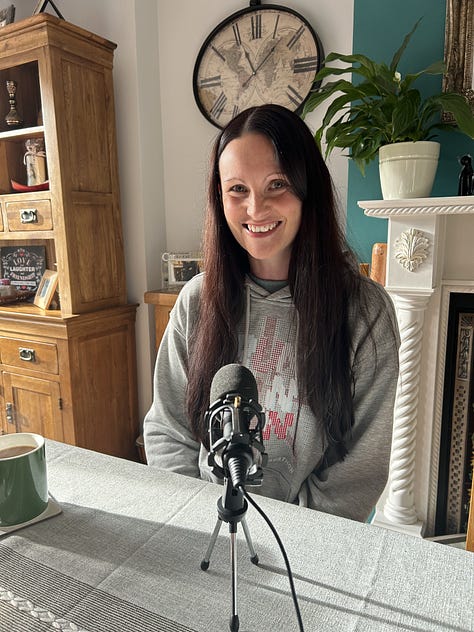


Living with CF is no walk in the park, not least the fact it comes with that lower life-expectancy.
Natalie said: “The reality is, it's there. We're all going to die. All of us. None of us know when our time is up.
“But for us, we have a number that is printed on us when we're born. It's in the medical textbooks. I was born in 1982 and back then it was considered a childhood disease because children didn't grow up, they didn't get to see their 16th birthday.
“There was no treatment, there wasn't a lot of testing. Now, there's a heel prick test which newborn babies have, but that didn't come in until 2007. That can miss a lot of the rare mutations, but if there is suspicion that there's a baby with CF, you can go on and have further testing.”
Natalie’s daily routine takes around six hours to complete, and includes using a nebuliser as soon as she wakes up and putting on a physiotherapy vest that shakes all the mucus out of her lungs.
She said: “I'm not going to lie and say it's all roses and rainbows. It's not. Behind the scenes, life is really hard. It's really hard living with CF. It's relentless.
“There are no days off, there's never a break. If I'm on holiday, I still wake up and I have CF. I still have to work hard.
“A rest day to me is still doing all of my treatments. It's still gently stretching and doing all of those things to keep me moving.”
Another part of controlling her CF is having to take salt tablets as people with the condition can’t absorb salt.
“Think of when you're running and you're really dehydrated,” she said. “That's us every day. I have to take salt tablets every day to put the salt back in.
“When we sweat, the sodium can't be absorbed back into the skin. We get salt crystals on our skin. It’s a bit like vampires - if you watch Twilight, you’ll know how they sparkle.
“Most people say it's really disgusting. On all of my running clothes, I'll have all these white stains of salt.
“But I always like to flip it and say, ‘I sparkle when I run’. It's a positive, isn't it?”
There is a more serious side to Natalie’s ‘sparkling’ though. As well as not being able to absorb salt, people with CF struggle to absorb the fats and vitamins their bodies require every day.
Runners naturally need more calories anyway, especially when training for longer distance events. As someone with CF, Natalie therefore has to take in 5,000 calories a day and even more when marathon training.
“Most people with CF have a feeding tube,” she said. “Just before I started my running journey, I was threatened that if I didn't put on weight, then I would have to go down the route of having one.
“Doctors like people with CF to have a little bit of extra weight in case of illness as we lose weight so quickly because our bodies are working so hard all the time.
“They say a person with CF works their bodies five times harder on a daily basis just to breathe and just to keep ticking over.”
As well as running for her own health and to inspire her children, Natalie wanted to combat the medical orthodoxy that said she was too ill to run.
She said: “Through my own research, I created a path for other people with CF to use exercise as their treatment.
“When I spoke to my hospital about it, there were no studies, there was nothing being done to promote exercise.
“We've got thick, heavy cement sat on our lungs daily that builds up and up and up and it doesn't go anywhere - the only way you can move that is through movement.
“My question for the doctors was ‘why aren't we encouraging exercise?’”
‘Running has taken over my soul’ - living with passion and not sweating the small stuff:
Despite all the challenges it brings, Natalie believes cystic fibrosis has given her one big benefit: the power not to sweat the small stuff.
“It's a blessing and a curse having CF,” she said. “It's a blessing because I get to live so fully and I am genuinely happy in life. How many people can really say that?
“If I'm in a traffic jam and it's taking ages and you see the road rage, or you're in a queue at Tesco and it's taking ages, I think what's the point in stressing?
“It's not worth it because there's always someone out there fighting for their life and fighting to breathe.”
Natalie said living for her children - Preston and her daughter, Skye-Hope - is “the push” she needs if times get hard.
“I have to be okay for them. But in saying that, I also have to create a balance of knowing when to stop, when to reign myself in, to not be selfish in chasing the crazy goals that I do have in my mind,” she said.
“Living with CF makes you very intense with chasing things and getting out there in life and exploring. There's so much that I want to do and so much I want to show my children in terms of experiences and seeing the world.
“I am so intense in how passionate I am about living. When things get really tough, I look back at all of my friends I've lost with CF and think I have to live for them.
“This sounds really awful, but people that are really healthy and wake up and moan about having an injury - and we all do, that's okay, that's not playing down anyone's injury or illness - but if we wake up and what's the worst, you've got an injury and you can't run for a few weeks, you've woke up and you're alive.
“You've got that chance. And so many people don't have that. So many people aren't waking up. I think all of us that do have the opportunity, every day we wake up, that we have to live for those that don’t.
“It’s not a case of having to go out and run, having to go to work, having bills to pay. We have to do blah, blah, blah. No, we get to do that.
“It's about changing your mindset and believing that we are so blessed to be here. That's what we have to keep living for.”
That… and running.
“For me, running is everything,” Natalie added. “It's my entire personality. I set out to do a few kilomotres, which then turned into a half-marathon, which then turned into 31 halves and four marathons later.
“And it has taken over my soul. It is me. And I make no apologies for it being who I am because I'm so proud.
“It's not just helped me physically, but mentally. It's my coping mechanism for cystic fibrosis.
“If things are really dark with CF, I'll run it out. I'll run it out when I'm not feeling 100 per cent or when I'm feeling completely well, on the days where I think this is a good day and I'm blessed, I’ll go out and run.
“It's my complete personality and I'll never stop talking about running.”
Listen to Natalie on the Running Tales Podcast:
Listen on Spotify and Apple Podcasts, or wherever you listen to your podcasts. Just search for the Everyday Athlete Podcast Network, Please remember to give us a positive rating or review.
Support Running Tales:
Please help us keep producing Running Tales across Substack and in podcast form:
Also on Running Tales:
Check out our merchandise:
Pretty in Purple: Be a part of the Running Tales revolution with our new merchandise range.
We’ve got buffs, caps, cups, t-shirts and hoodies - why not complete your next run as an everyday runner by doing extraordinary things?
Our hats are in blue though…





